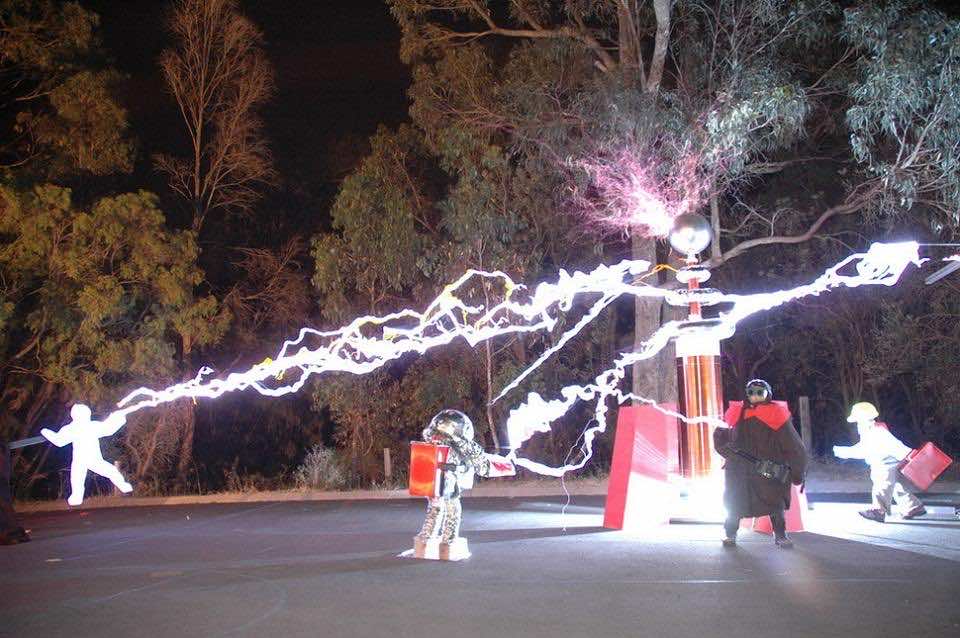We may not see all of life’s wonders, some of them happen on such a grand scale that they outlast our lives while others are so minuscule that they disappear with the blink of an eye. Here are 10 amazing phenomena based on scientific happenings that many of us wouldn’t be able to see otherwise. Check out these Youtube videos below:
1. Decomposing Mercury
Mercury(II) thiocyanate doesn’t have many uses. It’s used sparingly in a handful of chemical syntheses, and it has a limited ability to detect chloride in water. But the compound has one show trick, when it decomposes, it forms carbon nitride and mercury vapor, a very toxic mixture. There’s no accurate way to describe what’s happening in this video, other than that heat jump-starts mercury(II)’s decomposition. Putting a flame to the powdery compound starts a chain reaction, which ends in a destructive manner.
2. Lord Kelvin’s Thunderstorm
Also known as Kelvin Water Dropper, it was first built in 1867 and its simple to setup. Drip two streams of water through two differently charged inductors, one positive and one negative. Collect the charged water drops at the bottom, let the water flow through, and harvest the electric potential. Instant energy, or at the least a little spark that you can show your friends.
3. Sine Waves and FPS
If you have ever listened to music with a heavy bass beat in your car, you have probably noticed the mirrors rippling when the sound waves hit them. The same thing is happening in the video above but with much more extreme results. The magic is truly caused by the camera in a phenomenon called shifted perspective. If the cameras frame rate is changed even slightly from the actual frequency of 24 Hz or 24 cycles per second, you will see the wave of water behave differently.
4. Tesla Coil Warriors
Many of us know Nikola Tesla, and some even know of his famous coil called the Tesla coil, a device that produces low current, high voltage AC electricity along with healthy amounts of colourful sparks. Modern day versions of the coil can put out 250,000 to 500,000 volts of current. In the video above, the two “warriors” are covered in suits of conductive mesh, which act as Faraday cages and distribute voltage evenly around their surfaces. Since electric potential is measured by differences in voltage, there is no current inside a Faraday cage and the people remain unharmed.
5. The Briggs-Rauscher Reaction
The reaction is known as a chemical oscillator which is as it reacts, gradually changes in color from clear to amber, then suddenly flashes to a dark blue, then back to clear, all in one oscillation. This is continued for several minutes. Up to 30 different reactions can happen simultaneously and a variety of chemicals can cause this amazing display.
6. Liquid Oxygen Bridge
The boiling point of oxygen is -183 ºC, once it drops below that temperature, oxygen takes on some amazing properties. The denser configuration of its molecules in a liquid state allow oxygen’s more obscure natural properties to come forward. Oxygen is a paramagnetic material that is only magnetized if a nearby external magnetic field acts on it. With two oppositely oriented magnets, the liquid oxygen will form a bridge in the middle.
7. Induction Heating An Ice Cube
Induction heating is a process that uses the Joule effect, which is electrically-induced heat. The process can be occur fairly quickly depending on the conductor used. Four seconds into the video, the core of the ice cube is already red hot, so you can guess that the metal has relatively lower resistance. So why does the ice catch fire? It’s because matter only accepts and emits energy in discrete energy packets and the heater is delivering it in huge amounts so it takes more time to transfer its full force.
8. Ferrofluid Sculptures
Ferrofluid is a magnet particles in a liquid medium, usually oil. The particles are on a nanoscale and they are too small to affect each other, so the liquid does not clump into itself. One of the most common things that a ferrofluid does is form spikes and valleys when it’s near a magnet. What it actually is, is the particles attempting to align themselves with the magnetic field. The spikes form where the field is strongest, but since the oil carries surface tension, the two forces reach an equilibrium at the tips of the spikes.
9. Newton’s Beads
If you take a jar and fill it with a long chain of beads and then coil the string of beads into the jar, then jerk one end out of the jar and towards the floor, you’ll see the beads leap up into the air like a fountain before curving back towards the floor. This is due to three different forces at work. Gravity, of course, pulls the leading edge of the chain towards the floor. As each chain link succumbs to gravity, it pulls along the bead behind it which is the the second force. The the third force is the jar propelling the beads into the air.
10. Quantum Levitation
When certain materials are cooled below a certain temperature, they become materials with almost zero resistance or superconductors. That temperature is usually very low. For example, rhodium makes the crossover at -273.15 ºC. Then came high-temperature superconductors, which are materials with complex crystalline structures and are usually made with a mixture of ceramic and copper, along with other metals and transition at around -160.59 ºC which is also the boiling point of nitrogen. When superconductors are placed near a magnet, they create a surface barrier of electric current that repels magnetic waves and locks the superconductor in place creating quantum levitation.



Nice